Double Cluster
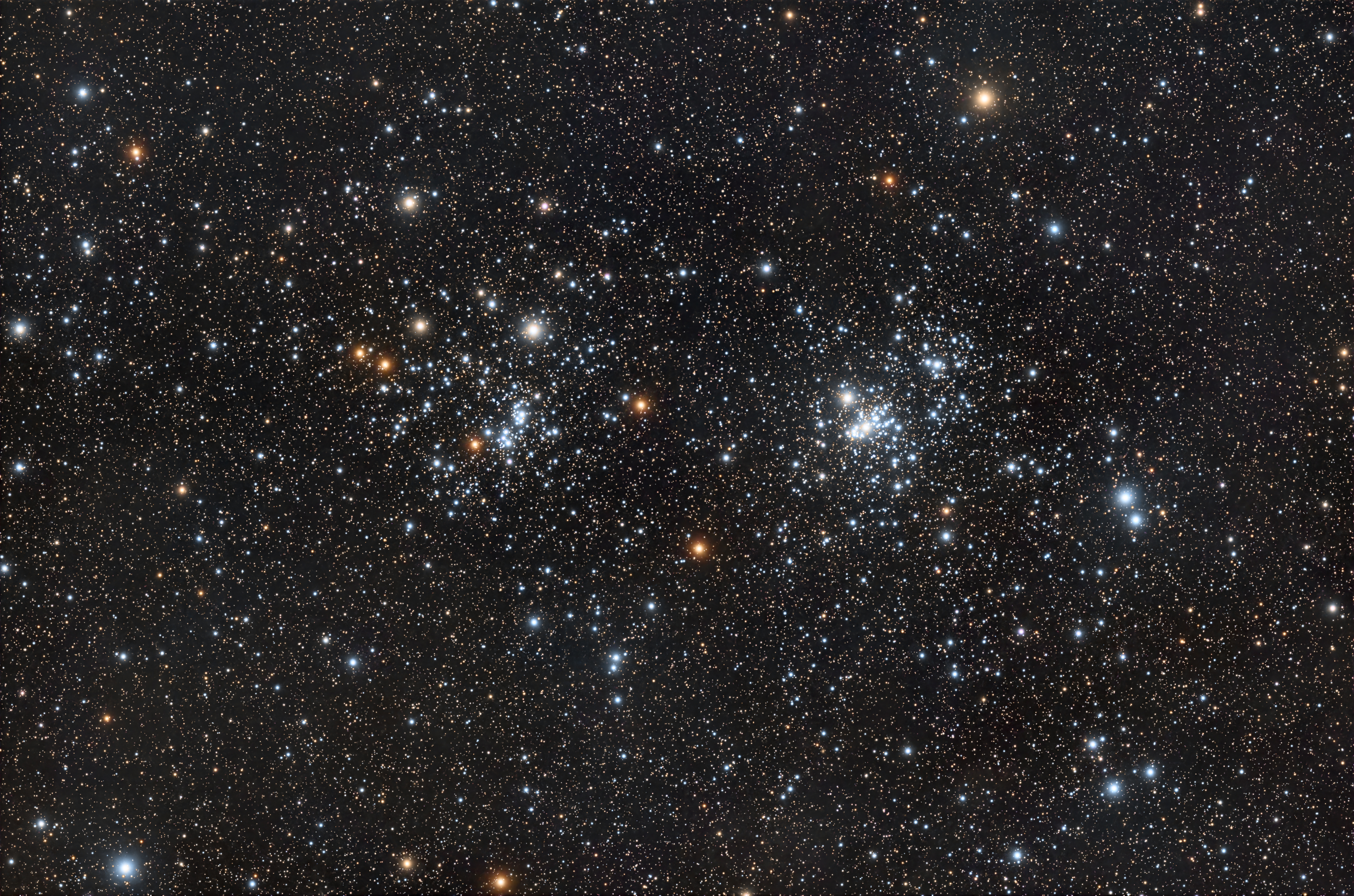 Click image for full size version
Click image for full size version
August 3, 2025, NASA Astronomy Picture of the Day August 7, 2025
NGC 869 (right) and NGC 884 each contain hundreds of stars and are about 13 million years old (compared to 75-150 million years for the Pleiades). Lying about 7,500 light years away and a few hundred light years apart, they have a combined mass about 6,500 times our Sun’s. However, their combined halo is more than 20,000 solar masses. The clusters are moving towards us at a speed of about 40 km/s. These open clusters are bright enough that they were originally given star designations (h- and Chi Perseus). They are visible to the naked eye, appearing as an oval foggy patch in a dark sky. They look like sparkling white diamond dust in binoculars or a small telescope. Images reveal subtle differences in the hues of the stars.
I’ve photographed the Double Cluster with just about every different scope and camera that I’ve ever used. I chose it as one of the first targets for the Sky-Watcher Esprit 120, so I could evaluate star colours and shapes. I also re-confirmed my positive views of the Optolong L-Quad Enhance Filter. I think the star colours in this image are as good as any I have seen of this object. And this image was selected by NASA as an Astronomy Picture of the Day, my first one!
Tekkies:
Acquisition, focusing, and control of Sky-Watcher Wave 150i mount and other equipment with N.I.N.A. and Green Swamp Server. Primalucelab 3″ ESATTO focuser, ARCO rotator, GIOTTO flat panel and ALTO cover motor. Equipment control with Primalucelab EAGLE 6 Pro computer. All pre-processing and processing in PixInsight. Acquired from my SkyShed in Guelph. Acquired under above average transparency and seeing and no Moon from July 28 – August 2, 2025.
Second Image with Sky-Watcher Esprit 120 refractor. QHY168C camera with Optolong L-Quad Enhance filter.
84 x 5m = 7hr 00m
Preprocessing: The WeightedBatchPreProcessing script was used to perform calibration, cosmetic correction, debayering, weighting, registration, integration and Drizzle integration of all frames (2x drizzle, 1.0 Drop Shrink).
Gradient Removal: SpectrophotometricFluxCalibration was applied followed by MultiscaleGradientCorrect was applied with default settings. DBE was then applied.
Colour Calibration: BlurXterminator was applied to the RGB master with Correct Only selected, followed by SpectrophotometricColorCalibration.
Deconvolution: BlurXterminator was applied to the RGB master with Automatic psf , star sharpening set to 0.35, and non-stellar set to 0.
Linear Noise Reduction: NoiseXterminator was applied with settings Amount=0.9 and Iterations=4.
Stretching: HistogramTransformation was applied to make a pleasing image with background approximately 0.1.
Nonlinear Processing
Nonlinear Noise Reduction: NoiseXterminator was applied with Amount=0.9 and Iterations = 4. SCNR was applied with default settings except Amount = 0.5.
Re-stretch: HistogramTransformation was used to boost contrast by moving the dark point to the toe of the histogram and slightly decreasing the mid-point slider.
Final Steps: Background, and star brightness, contrast, and saturation were adjusted in several iterations using CurvesTransformation with masks as required. ICCProfileTransformation (sRGB IEC61966-2.1; Relative Colorimetric with black point compensation) was applied prior to saving as a jpg. The finder chart was made using the FindingChart process.

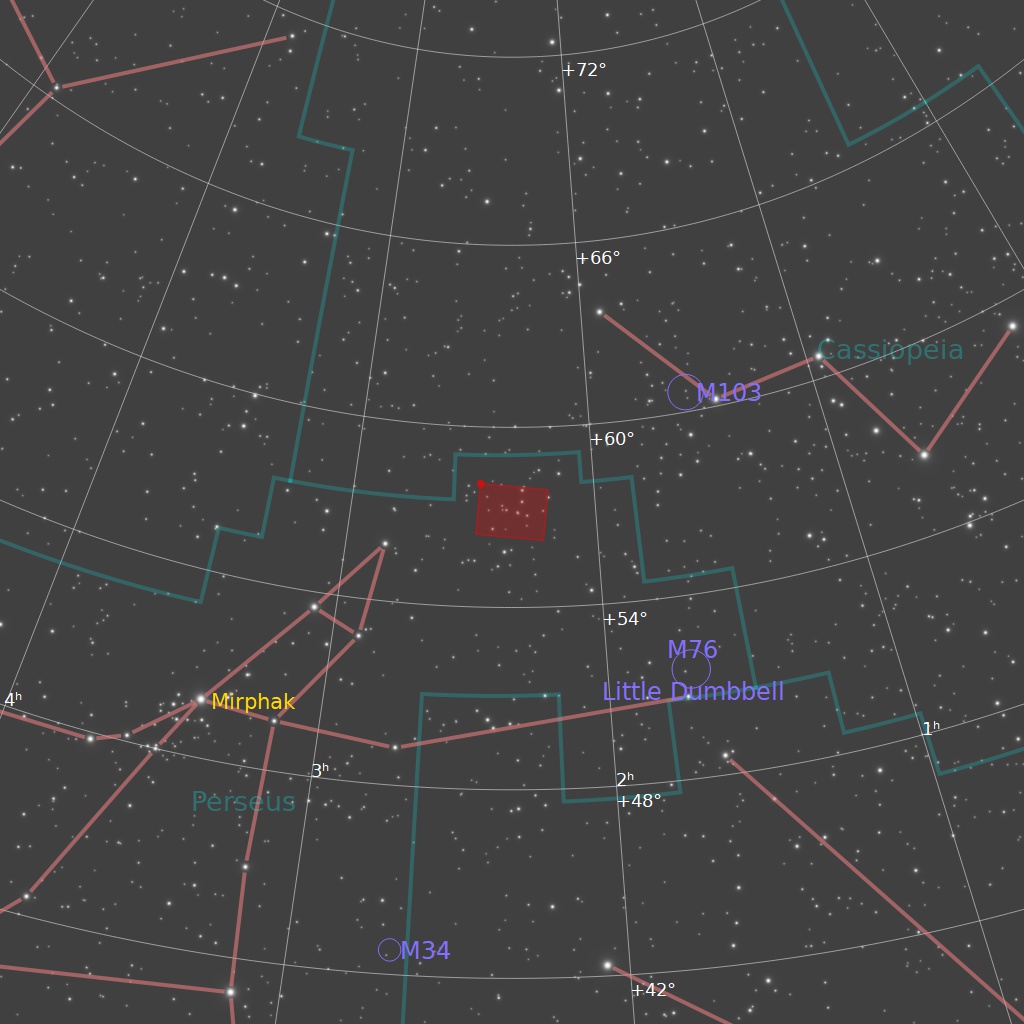
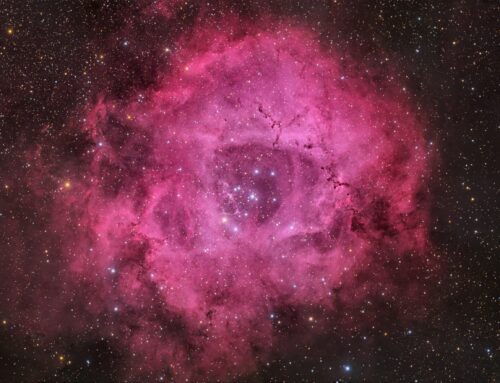
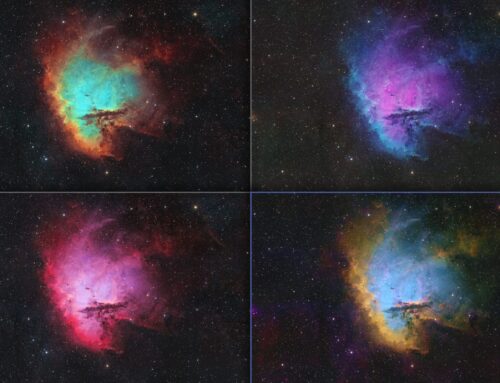
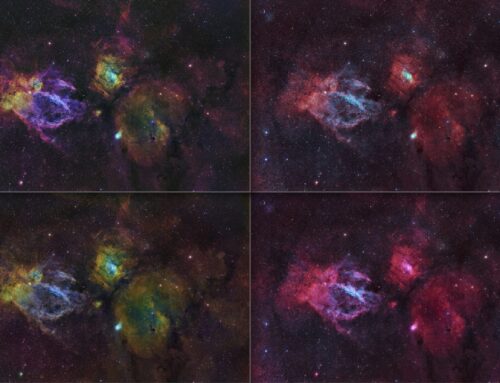
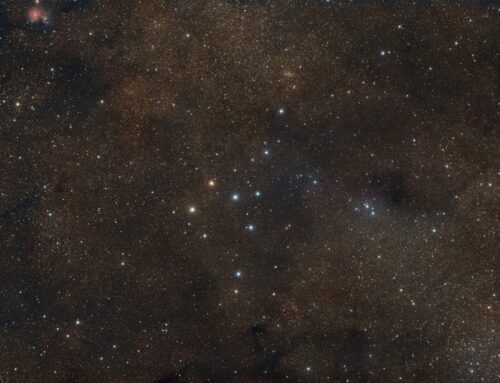
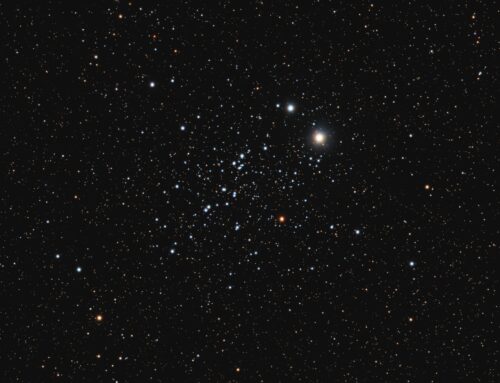
Gorgeous image, like always!
wonderful, thank you for your work.
Absolutely gorgeous! Thank you for sharing.